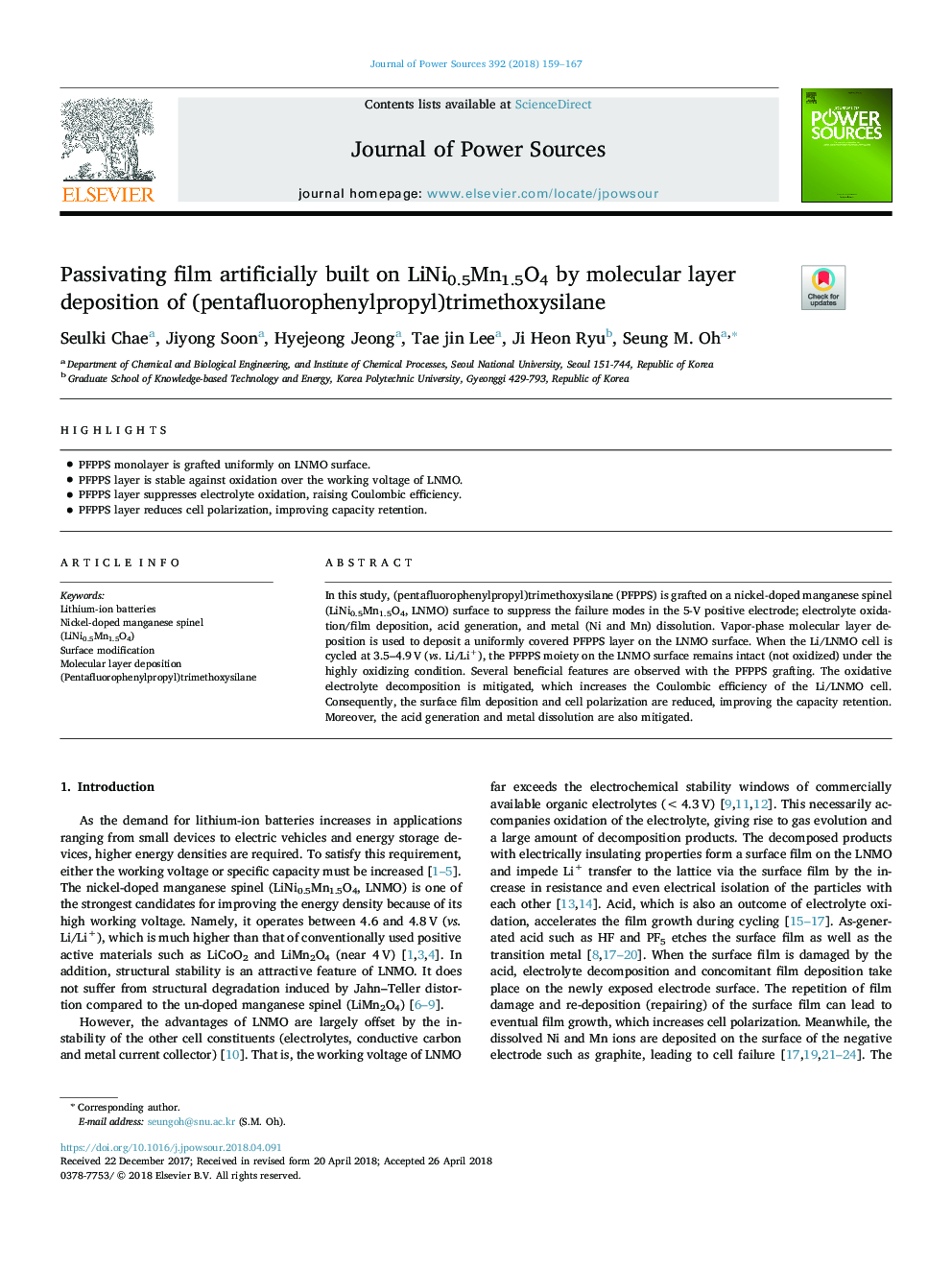| Article ID | Journal | Published Year | Pages | File Type |
|---|---|---|---|---|
| 7725047 | Journal of Power Sources | 2018 | 9 Pages |
Abstract
In this study, (pentafluorophenylpropyl)trimethoxysilane (PFPPS) is grafted on a nickel-doped manganese spinel (LiNi0.5Mn1.5O4, LNMO) surface to suppress the failure modes in the 5-V positive electrode; electrolyte oxidation/film deposition, acid generation, and metal (Ni and Mn) dissolution. Vapor-phase molecular layer deposition is used to deposit a uniformly covered PFPPS layer on the LNMO surface. When the Li/LNMO cell is cycled at 3.5-4.9â¯V (vs. Li/Li+), the PFPPS moiety on the LNMO surface remains intact (not oxidized) under the highly oxidizing condition. Several beneficial features are observed with the PFPPS grafting. The oxidative electrolyte decomposition is mitigated, which increases the Coulombic efficiency of the Li/LNMO cell. Consequently, the surface film deposition and cell polarization are reduced, improving the capacity retention. Moreover, the acid generation and metal dissolution are also mitigated.
Related Topics
Physical Sciences and Engineering
Chemistry
Electrochemistry
Authors
Seulki Chae, Jiyong Soon, Hyejeong Jeong, Tae jin Lee, Ji Heon Ryu, Seung M. Oh,
